PART 01
Course Overview
Course Name: TCP/IP Protocol Analysis
Field of Study: Network Engineering
Course Leader: Zhang Baojun
Affiliated Institution: School of Media Engineering
Course Type: Blended Online and Offline Course

PART 02
Course Highlights
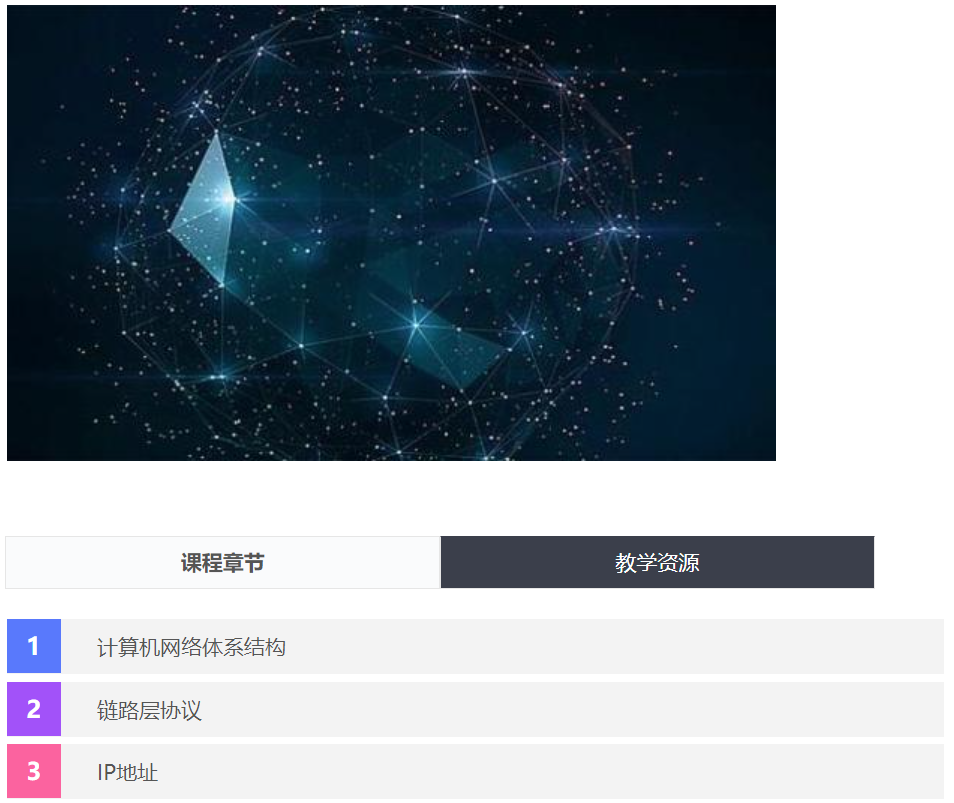
The “TCP/IP Protocol Analysis” course is a core course for the Network Engineering major, featuring significant highlights. It focuses on internationally standardized protocols, with TCP/IP being highly authoritative, serving as the cornerstone and core stability of the Internet. The course balances theory and practice, covering practical aspects such as protocol analysis, laying a solid foundation for subsequent courses, while also emphasizing the cultivation of students’ ability to solve complex network engineering problems in accordance with engineering education accreditation requirements. The teaching reform is highly innovative, adopting a blended approach that combines online and offline learning, balancing self-directed study with face-to-face interaction; integrating theory with practice to deepen understanding and application of knowledge; combining in-class and extracurricular activities to promote comprehensive student development; and linking course innovation with faculty research to foster teaching research, cultivate reform projects, and stimulate students’ innovative awareness and practical abilities, aiming to create a top-tier blended online and offline course.
PART 03
Course Objectives
Fully implement the spirit of the 20th National Congress of the Communist Party, adhere to the guidelines for high-quality educational development, and align with the educational positioning of Zhejiang University of Media and Communications. Addressing the issues of students’ weak professional foundations and insufficient engineering practical abilities, this course aims to achieve the following objectives through a blended online and offline teaching approach:
1. Knowledge Objectives: Understand the encapsulation formats and functions of the main protocols in the TCP/IP protocol suite, master the working principles of the protocols, and possess a certain background knowledge in network engineering.
2. Ability Objectives: Articulate and analyze complex network engineering problems to derive effective conclusions; plan and design complex network systems based on requirements, providing feasible solutions; proficiently use network simulation tools for network construction, configuration, analysis, and testing.
3. Quality Objectives: Establish a correct worldview, values, and outlook on life; cultivate national confidence, cultural confidence, and institutional confidence; produce responsible, virtuous, and patriotic qualified talents.
PART 04
Course Development Measures and Achievements
1. Development History of the Course
Since the first enrollment of the Network Engineering major in 2009, the “TCP/IP Protocol Analysis” course has been offered as a core course. The development of the course has gone through three significant stages.
1) From Offline to Blended Online and Offline: Initially, the course was primarily taught in traditional classroom settings. In 2011, the course was launched on the BB online teaching platform, and in 2020, it transitioned to the Chaoxing Learning Platform. Over the years, the course has gradually shifted to a blended teaching model. The platform has enriched teaching resources, adding instructional videos, interactive teaching materials, and creating a question bank, with assignments and lab reports now submitted, graded, and statistically analyzed online.
2) Focus on Engineering Education Accreditation: In 2017, the Network Engineering major revised its training program according to the requirements of engineering education accreditation. As a core course, “TCP/IP Protocol Analysis” developed its syllabus based on the graduation requirements of engineering education accreditation, emphasizing the cultivation of students’ engineering practical abilities and establishing a more comprehensive teaching and evaluation system.
3) Incorporation of Ideological and Political Education: Since 2021, ideological and political content has been integrated into the classroom, focusing on cultivating students’ knowledge and abilities while also emphasizing their moral character and overall quality.
2. Key Issues to Address in Course and Teaching Reform
The “TCP/IP Protocol Analysis” course is highly practical, covering core technologies of the Internet that support its applications. The three main directions of the Network Engineering major—networking, programming, and security—are all based on the professional knowledge from “TCP/IP Protocol Analysis.” However, students generally exhibit weak engineering practical abilities, primarily due to three reasons: insufficient professional foundation, limited hands-on experience, and lack of engineering application background knowledge. Enhancing students’ engineering practical abilities is a key issue that this course’s teaching reform aims to address, with the expectation that the blended teaching approach will fully engage students’ classroom and extracurricular time, allowing for online self-study of foundational knowledge and in-class activities that enhance interaction through questioning, answering, discussion, and practical guidance, leading to a deeper understanding of more complex engineering application background knowledge.
3. Blended Teaching Design
The blended teaching approach follows the principle of online self-study of foundational knowledge through the online teaching platform, while offline classroom teaching checks learning outcomes, addresses questions, and provides in-depth learning and practical guidance. In the teaching design, online self-study resources such as teaching materials, instructional videos, and exercises are prepared in advance, establishing clear online self-study objectives and tasks for students to engage in thoughtful online learning. During offline classroom teaching, the completion of online learning tasks is first checked, and carefully designed questions are posed to assess students’ learning outcomes. The Q&A session addresses students’ encountered issues, and deeper knowledge is discussed among students, guiding their thinking and providing feedback on their discussions. Relevant engineering application background knowledge is explained using network application cases to enhance students’ engineering practical abilities.
4. Course Content and Resource Development and Application
Since 2011, this course has developed comprehensive teaching materials, including textbooks, syllabi, teaching schedules, teaching plans, teaching presentations, teaching software, lab plans, lab manuals, and reference materials. Additionally, the course places great emphasis on the development of online courses, actively creating an online teaching platform to share teaching resources. The online course was initially established in 2011 on the BB platform and transitioned to the Chaoxing Learning Platform in 2020. The platform not only provides electronic versions of all teaching materials but also facilitates daily teaching management tasks such as notifications, communication, assignments (assignment submission, online grading, and score publication), labs (assignment, lab report submission, online grading, and score publication), Q&A, discussions, exercises, and tests, greatly facilitating course teaching and management. Since being designated as a provincial-level top-tier blended course in 2022, teaching resources have been further enriched, with the addition of instructional videos, interactive materials, and a more complete question bank. Students can now self-study foundational knowledge online and engage in online exercises, quizzes, and other learning activities.
5. Teaching Method Reform
The teaching method breaks away from traditional classroom models, adopting a blended teaching approach that integrates the advantages of both online and offline teaching. The online component leverages the resource advantages and teaching management capabilities of the online platform, focusing on enhancing the construction of online resources, including teaching presentations, instructional videos, practical resources, reference materials, and question banks, allowing students to independently learn foundational knowledge outside of class. Daily teaching management, including notifications, attendance, classroom discussions, quizzes, assignments, and lab reports, has been transitioned to the online platform, achieving a largely paperless operation. The offline component capitalizes on the advantages of traditional classroom teaching for supervision and interaction, allowing for face-to-face communication and interaction between teachers and students to check students’ grasp of relevant knowledge points, address questions encountered during learning, and expand on more in-depth professional knowledge, guiding students in practical applications. Thus, online learning builds foundational knowledge, while offline teaching assesses, answers questions, enhances understanding, and provides practical experience.
6. Course Teaching Content and Implementation Status
The course teaching content encompasses three parts: foundational knowledge of TCP/IP protocols, practical teaching, and engineering application background knowledge. The foundational knowledge primarily covers the functions, encapsulation formats, and working principles of the main protocols in the TCP/IP protocol suite; practical teaching mainly involves capturing and analyzing protocol messages, socket network programming based on TCP/IP protocols, and networking technology practice using PacketTracer simulation software; engineering application background knowledge focuses on specific application scenarios, such as network demand analysis and solution design for universities, banks, and government agencies. In terms of organization and implementation, students first master foundational knowledge through online self-study, establishing a certain professional foundation, followed by interactive exchanges in offline classrooms to address questions, clarify doubts, and enhance practical skills, while supplementing students’ engineering application background knowledge. The entire teaching process is structured clearly, gradually deepening from theory to practice, and from simple to complex. Finally, through an outcome-oriented assessment mechanism, students’ achievement of course objectives is evaluated, identifying areas for improvement in teaching for continuous enhancement.
7. Course Grading Method
In course assessment, to meet the calculation requirements for the achievement of graduation requirements corresponding to engineering education accreditation, effectively evaluate the completion of course objectives, and quantitatively assess the achievement of graduation requirements, the specific assessment methods for this course are as follows: the overall grade is composed of regular assignments (15%), course experiments (15%), online learning (10%), classroom performance (10%), and final exam (50%). Regular assignments include assignment quality (50%) and completion status (50%); course experiments include content of lab reports (40%), report writing standards (30%), and teamwork (30%); online learning includes online exercises (40%) and online video viewing (60%). The final exam is conducted in a closed-book format, with foundational knowledge assessment accounting for 40% and comprehensive application ability assessment accounting for 60%.
8. Course Evaluation and Reform Achievements
Over the years, student evaluations of this course have consistently exceeded 80 points. Since the implementation of blended online and offline teaching, the teaching evaluation has improved, with evaluations of 81 points in the 21-22-1 semester and 89 points in the 22-23-1 semester. The school’s supervision rated the teaching evaluation of this course at 87 points.
Since the implementation of blended online and offline teaching reform, adopting an outcome-oriented evaluation system for engineering education accreditation and integrating ideological and political education into the classroom, the teaching results have been significant. Firstly, blended online and offline teaching has promoted the construction of online teaching resources, providing assurance for students’ online learning; secondly, the engineering education accreditation evaluation system better assesses teaching effectiveness, providing a basis for continuous improvement in teaching and guiding direction; finally, the integration of ideological and political education emphasizes students’ moral education, enhances their patriotic feelings, establishes learning goals, corrects learning attitudes, and better promotes learning.
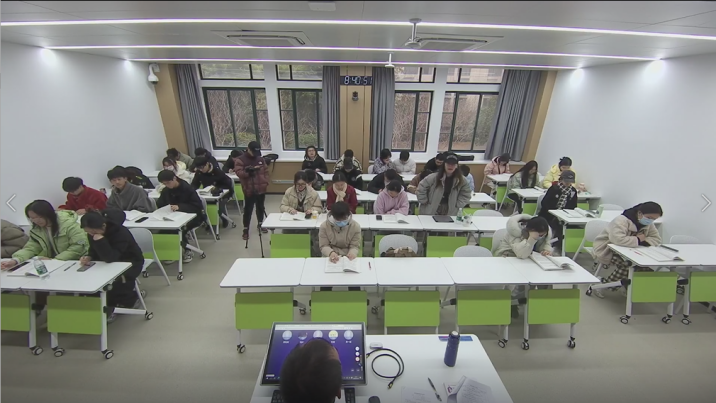
Figure 1: Classroom Questioning Session
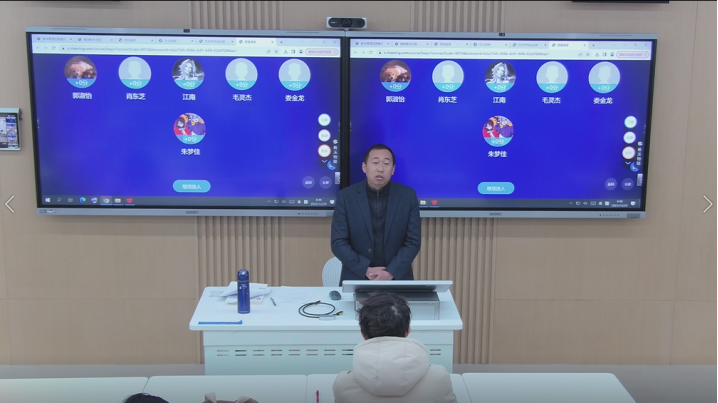
Figure 2: Q&A Session
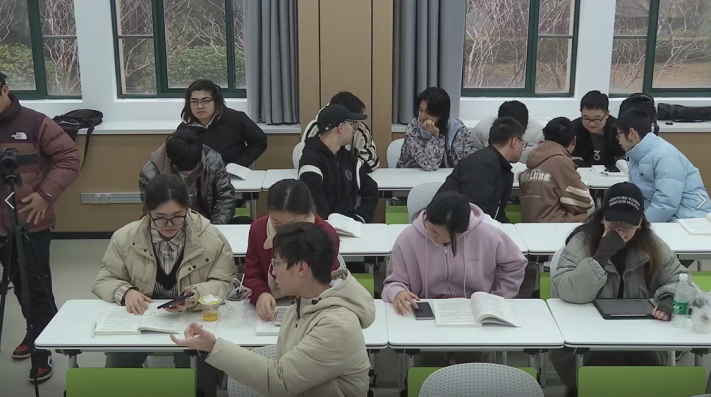
Figure 3: Classroom Discussion Session
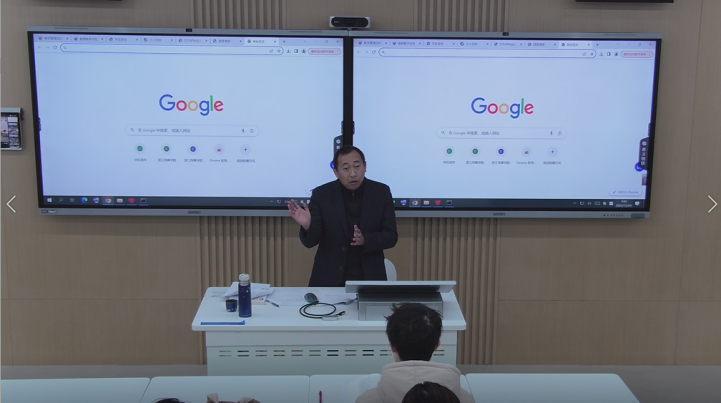
Figure 4: Knowledge Point Explanation
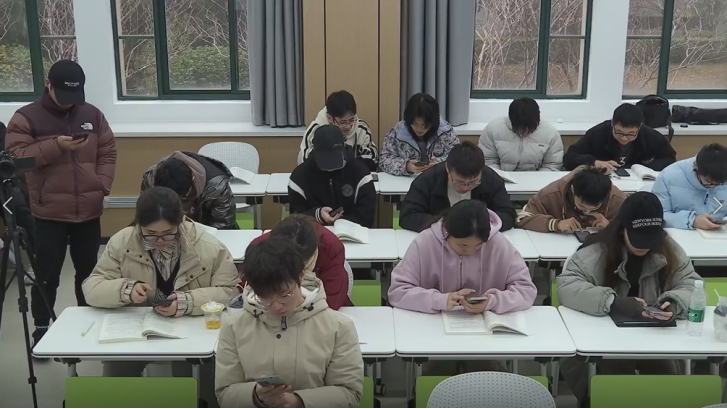
Figure 5: In-class Quiz
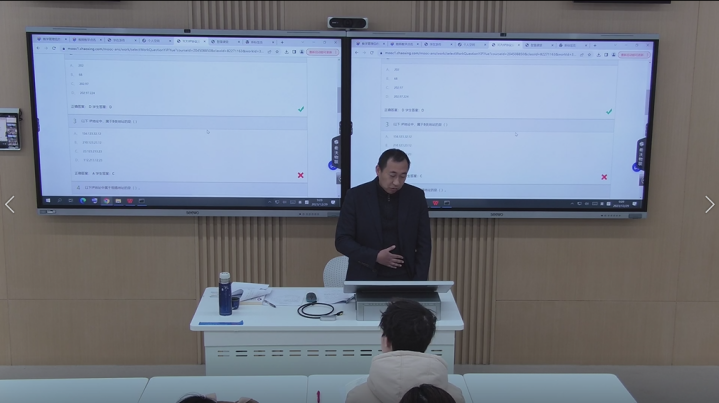
Figure 6: Exercise Explanation
PART 05
Course Features and Innovations
The “TCP/IP Protocol Analysis” course is a core professional course in the Network Engineering major, emphasizing theory, practice, and engineering capabilities, with strong practicality and the following features:
1. International Standard Protocol: The TCP/IP protocol is an internationally recognized standard protocol, authoritative and widely accepted, serving as the foundation of the entire Internet. Despite the rapid development of the Internet in recent years and the emergence of many new technologies and applications, the core of the TCP/IP protocol has remained largely unchanged.
2. Balance of Theory and Practice: The TCP/IP protocol is highly practical, with the course balancing theory and practice. Practical components include protocol analysis, network construction, and protocol application programming, laying the groundwork for subsequent courses.
3. Focus on Cultivating Engineering Practical Abilities: In accordance with the requirements of engineering education accreditation for students’ engineering background knowledge and abilities, the course emphasizes cultivating students’ ability to solve complex network engineering problems.
In terms of teaching reform, the course primarily relies on traditional offline classroom teaching while actively engaging in online teaching practices to create a top-tier blended online and offline course, with the following innovations:
1. Combination of Online and Offline: This approach combines the advantages of traditional face-to-face teaching with modern remote online learning. The online component is conducted through the online platform, allowing students to learn independently without restrictions on time and location; the offline component provides opportunities for face-to-face interaction and discussion. This blended teaching method enhances course accessibility and flexibility, promoting student engagement and learning outcomes.
2. Integration of Theory and Practice: Theoretical learning guides practice, while the practical process reinforces theory. By combining theoretical knowledge with practical applications, the learning effect and understanding are enhanced. Through this teaching model, students not only learn theoretical knowledge but also deepen their understanding through practical operations, improving their problem-solving abilities.
3. Integration of In-class and Extracurricular Activities: In terms of learning time, the approach integrates pre-class preparation, in-class learning, and post-class review; in terms of learning space, it combines online learning, classroom learning, and laboratory learning. By complementing classroom learning with extracurricular activities, students’ overall development is promoted. In-class teaching focuses on imparting knowledge, skills, and theory, while extracurricular activities provide practical opportunities for students to apply what they have learned in the real world, stimulating their initiative and creativity, enhancing the learning experience, and cultivating critical thinking skills.
4. Integration of Course and Scientific Innovation: The course serves as a driving force, relying on faculty research to actively engage in teaching research, exploring teaching methods, and cultivating teaching reform projects. This innovative educational model combines traditional course teaching with scientific innovation activities, encouraging students to actively participate in scientific research, technology development, and innovative practices during their learning process, fostering their innovative awareness and practical abilities.

Typesetting | Li Daning
Review | Yang Qingqing, Zhou Lin
Second Review | Xiang Yan
Final Review | Yao Wang